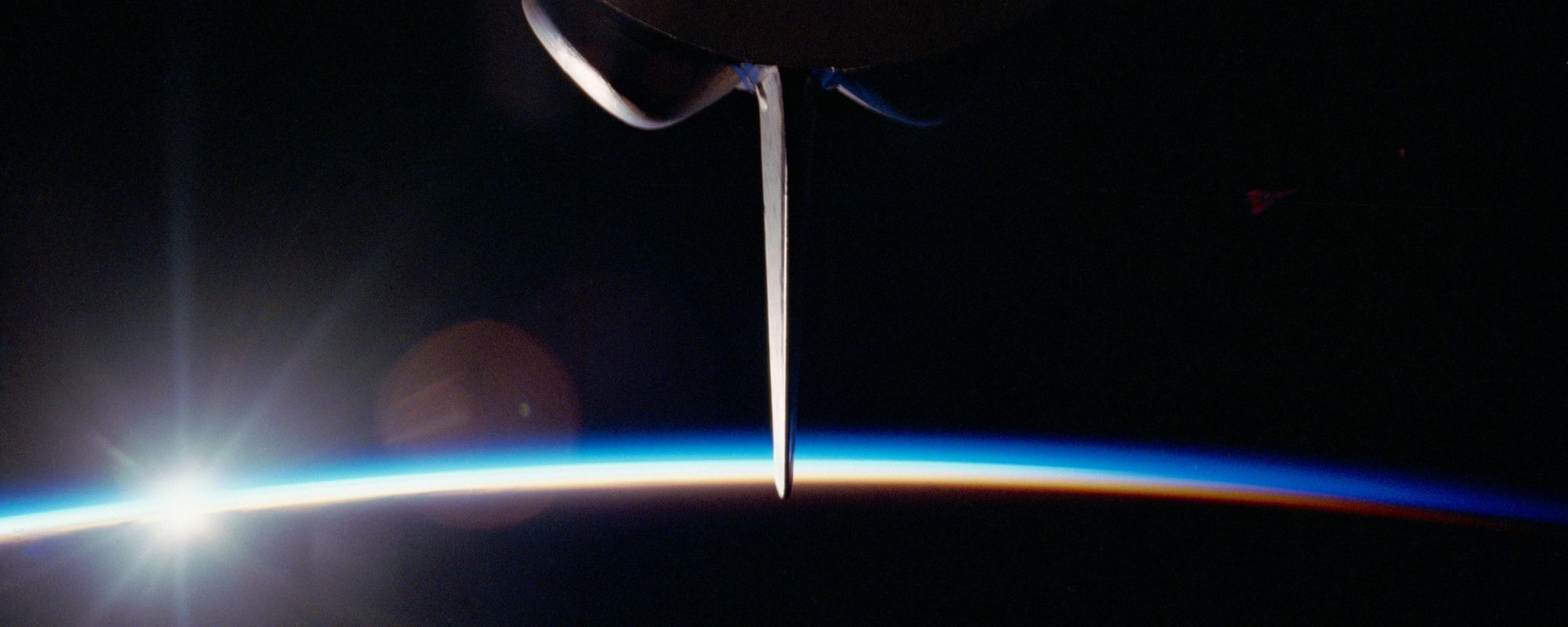By Chuck McClary, Digital Specialist and PR Coordinator
February 9 marks the twenty-ninth anniversary of Bernard Harris, Jr.’s spacewalk on STS-63 which made him the first African American astronaut to complete a spacewalk. In the new book, Space Shuttle Stories by Tom Jones, Harris’s partner on the spacewalk, Mike Foale, said, “Bernard Harris did the first EVA by an African American, and it was a big deal. Bernard was cool about it, but from a historical and US— even a world— societal perspective, it was important.”

Harris was born in Temple, Texas in 1956, making him thirteen when Neil Armstrong walked on the Moon. After seeing the landing on TV, Bernard was inspired to become an astronaut himself. He wrote a letter to NASA to find out their requirements. NASA replied, telling him he needed at least a master’s degree, relevant experience, and he needed to be a teachable team player. Bernard took the advice to heart, and from the age of thirteen he began to shape his academic career with the goal of becoming an astronaut.
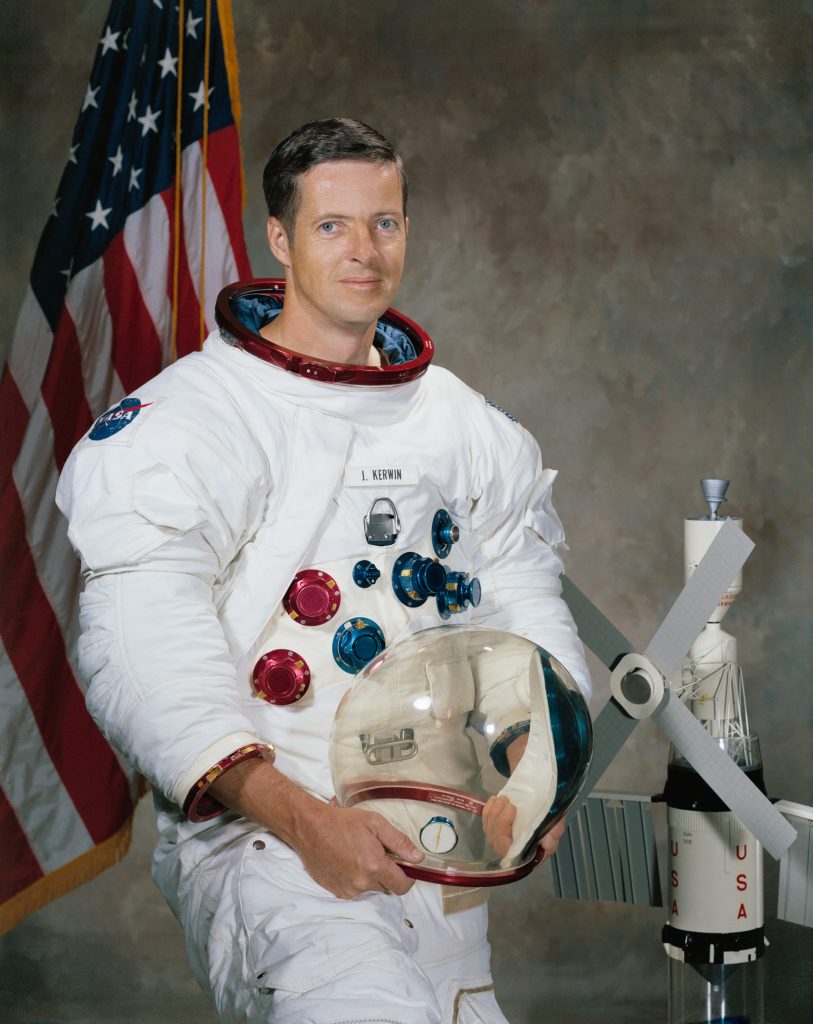
As he was planning his college career, Harris realized there was no way to get a B.S. in “Astronauting,” so he began looking for a main career path that would fit his goals. After learning that medical doctor Joseph Kerwin was included on Skylab 2’s flight crew, Harris decided he would also study medicine. It would allow him to help others while working toward his goal of becoming an astronaut. After acquiring a Biology B.S. from the University of Houston in 1978 and an M.D. from the Texas Tech University School of Medicine in 1982, he joined a fellowship at NASA Ames Research Center where he studied how astronauts lose bone mass in space.

NASA selected Harris as an astronaut candidate in 1990, and he officially became an astronaut in 1991. His first flight was in 1993, as a mission specialist on STS-55. Originally slated to launch in late February, the STS-55 launch was plagued by problems that repeatedly pushed back the launch date. Finally, on March 22, 1993, the Space Shuttle Columbia was ready to go to space. The Shuttle’s main engines began their ignition sequence at T-5 seconds, only to power back down just two seconds later. A faulty liquid oxygen turbopump caused Columbia’s number three engine to only partially ignite. Thankfully, the Shuttle’s computer caught the error and automatically aborted the launch. STS-55 successfully launched a little more than a month later on April 26. The STS-55 astronauts studied astronomy, materials science, life science, and technology applications that could only be studied in a microgravity environment.

Almost two years later on February 3, 1995, Bernard once again found himself on the launchpad for STS-63. Unlike his first flight, this time he sat in the second row of the flight deck, rather than the mid-deck one floor below. As he was unceremoniously shoved into space by a four-and-a-half million-pound behemoth of a rocket under three times more force than normal gravity, he would have had the unique experience of seeing the sky transition gradually from blue to black.
But there would have been little time to reflect. SPACEHAB experiments demanded constant attention, a display malfunctioned, and a few thrusters in the Reaction Control System (RCS) had sprung leaks. Troubleshooting RCS problems would not have been Harris’s responsibility, but they may have added to an elevated energy level as the crew added troubleshooting to their daily tasks.
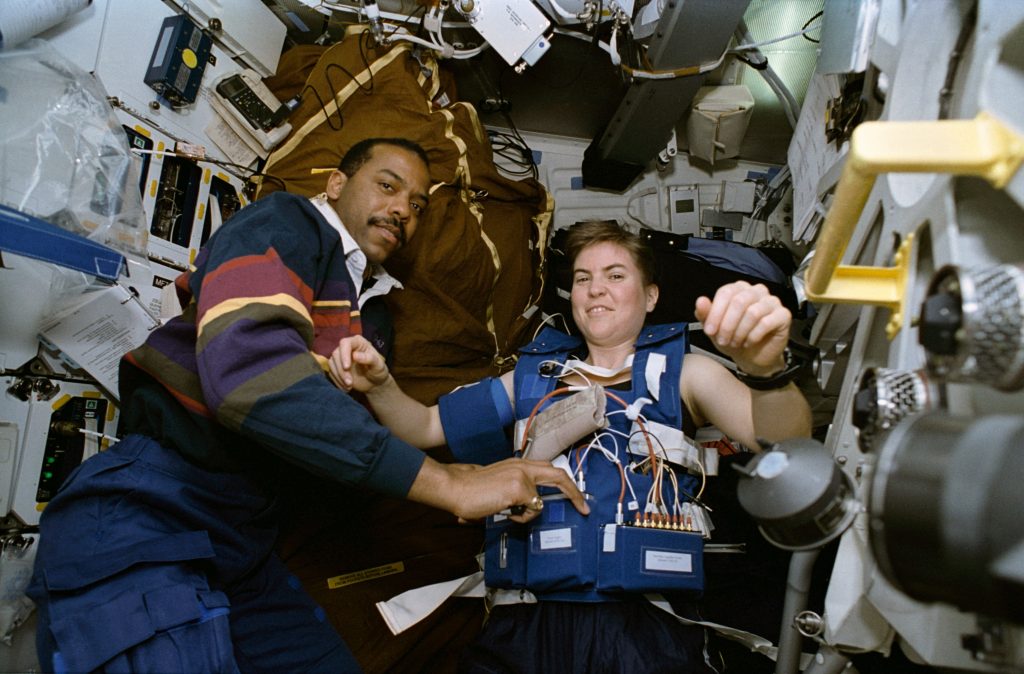

In those first couple days in orbit, the Shuttle crew used the spacecraft’s mechanical arm to grapple the SPARTAN satellite from their payload bay, used its ultraviolet camera to observe the leaking thrusters and the natural glow of the orbiter, then released it and let it fly free for about forty hours, making images of various astronomical targets. Soon, Discovery rendezvoused with the Russian space station, Mir, then flew around it taking photographs. Harris’s days were likely packed to the brim.
Finally, it was time for Bernard to join Mike Foale and suit up for their EVA. They were to check the suits’ thermal capabilities and experiment with moving large objects by hand in a microgravity environment. The massive, multi-layer suits took time to put on and required assistance from crewmates. Once the suits were donned, Harris and Foale had to stay in the airlock and pre-breathe in a pure oxygen environment for four hours. Although jokes were cracked, this was not a time to rest. Maneuvering in microgravity in large suits requires meticulous planning of every movement. During pre-breathing, Foale and Harris meticulously reviewed the EVA procedures. As they exited the spacecraft, they were greeted with hours of non-stop tasks.
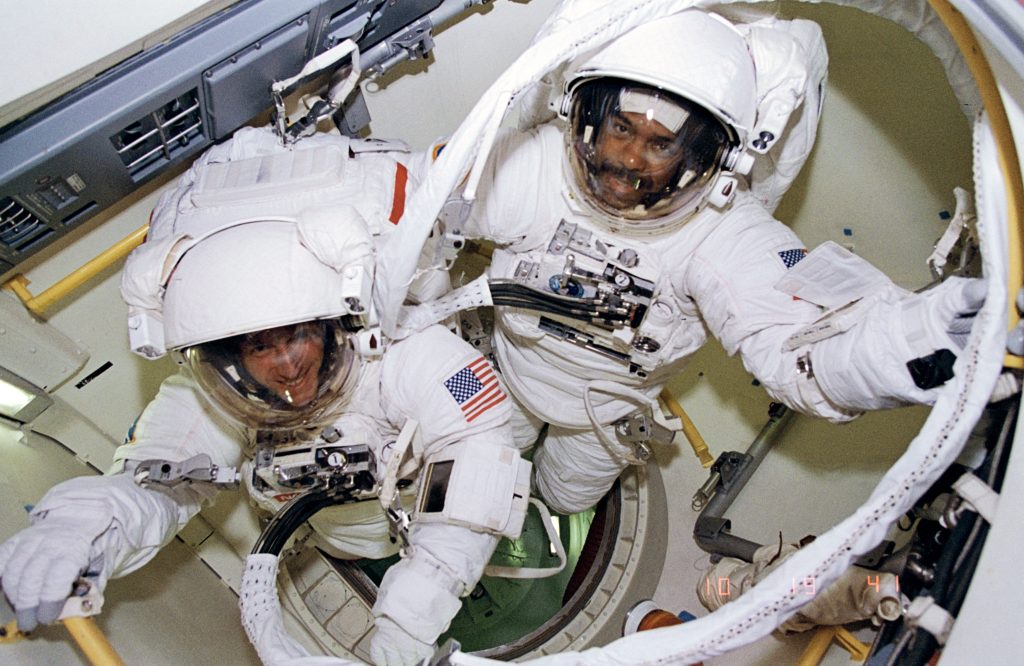
Suddenly, they were finished. Harris had a brief respite outside the Shuttle with nothing to do but float and reflect. Now, at the end of his EVA, having become the first African American to “step” outside a spacecraft, hearing nothing but his own breathing, Harris was greeted by a black sky above and a giant, shining, blue orb below.

“We were out there a little over five hours, and we had just about 40 minutes or so at the end where I could just hang out, as it were, on the end of the robotic arm and just take in that God’s-eye view as we’re going around the Earth at 17,500 miles an hour,” said Harris in an interview with Space.com.
For Harris, the experience was profound. “I remember looking at the crew and the vehicle below and then looking at the Earth, and then behind that the sea of stars, the universe all around us. In orbital nighttime, you get to take it all in, and I was just amazed. And I would add to all that, that I felt like this just didn’t happen — that there is order to the things within us and around us. I wouldn’t consider myself religious but a spiritual person; I came from a Christian family. And that whole view for me just confirmed my belief in a higher power, that there is indeed something greater than ourselves. Some people call that God, some people call that the universe. And I think when I speak to my scientist friends, some believe the same thing I do — that we only describe what’s already here. We may change things, we may create things, but from matter and energy that are already here, and we’re working within laws that we had nothing to do with.”
Dr. Bernard Harris, Jr. had spent every day since July 20, 1969, working toward this moment. Every college all-nighter, every prejudiced patient who didn’t believe he was a doctor, a malfunctioning rocket on his first mission that could’ve cost him his life— it had all been a crescendo to this silent fortissimo.

STS-63 would be Harris’ last spaceflight. After leaving NASA, he focused on helping people. He ran Vesalius Ventures— a company that invested in new ways to improve the field of medicine— and the National Math and Science Initiative which helped less fortunate kids get access to top-quality math and science teaching.
All images, credit: NASA
Sources:
https://archive.org/details/sts-63_post_flight_presentation
https://ia600607.us.archive.org/28/items/NasaAudioHighlightReels/Sts-63TranscriptProfile.pdf
https://www.nasa.gov/mission/sts-55/
https://www.nasa.gov/wp-content/uploads/2016/01/harris_bernard.pdf
https://www.nasa.gov/wp-content/uploads/2023/04/wings-ch3a-pgs53-73.pdf
https://www.space.com/nasa-astronaut-spacewalker-bernard-harris-interview
http://www.spacefacts.de/mission/english/sts-55.htm
http://www.spacefacts.de/mission/english/sts-63.htm
https://www.youtube.com/watch?v=fUliXCt-bDw
https://www.youtube.com/watch?v=_ZYwyazlfLI
Jones, Tom. 2023. Space Shuttle Stories: Firsthand Astronaut Accounts from All 135 Missions. Washington, D.C.: Smithsonian Books.
